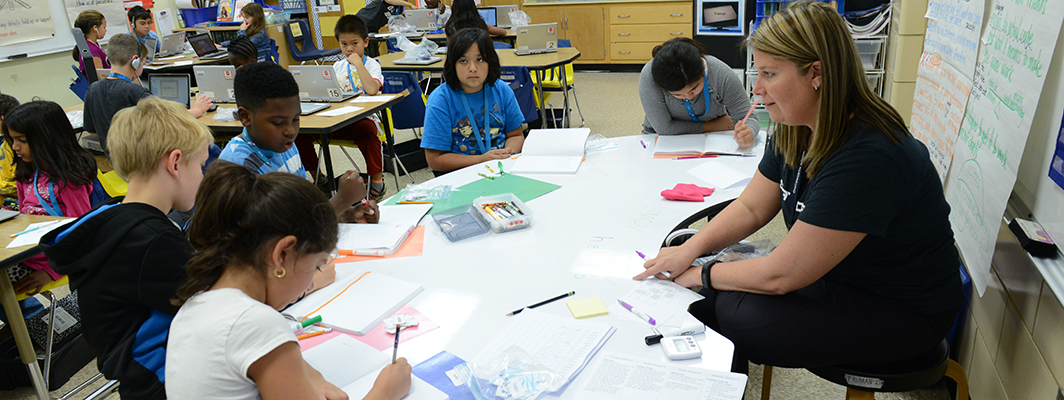
We moved our entire school two years in a row. Relocating the staff, students, materials, furniture, and technology twice in two years forces some good conversations.
Cajon Valley Union School District is systematically transforming classrooms, but the journey from vision to purchase order is not always in a straight line.
Since 2014, the classrooms at Magnolia Elementary reflected a mixture of teacher-led and student-led moments, most using rotation-stations or playlists to incorporate technology. Yet our classrooms still favored teacher desks and bulky tables and chairs. Rooms generally did not change much from day to day. We struggled with a vision “outside of the box”.
Think “hinges and wheels”. The furniture, layout, and learning resources have multiple configurations. Flexibility in our space is a reflection of flexibility in our thinking. We are still experimenting. We are still rearranging. The classrooms may be different tomorrow. Change is expected and welcomed.
Students are also a much larger part of the conversation. Teachers are engaging students daily about where they want to work and where they might want to move next. This focus on self-management is an important part of the work.
Educators Cooperative, Qualcomm, and the Thinkabit Lab helped us see practical, reasonable steps. The vision was clear; we did not need another pep talk. We needed practical wisdom.
Principals have to listen and build trust. Few topics are as invasive as redesigning the classroom. Principals who give teachers permission to take risks and choose to learn, support, problem-solve, and celebrate with them will be successful. This work is not clean or easy, but it is worth the time and effort.